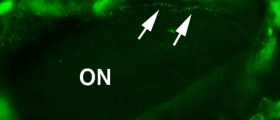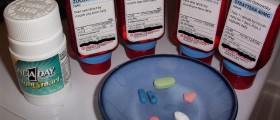
Fertility drugs are prescribed to women who want to conceive but suffer from ovulation issues. Some of these are taken orally while others are injected. Also, some fertility drugs directly stimulate ovulation and a release of an egg while others indirectly increase hormones in charge of stimulation of the ovaries.
Oral Infertility Drugs - Clomid
Clomid is the first drug women undergoing fertility treatment are prescribed with. This drug has been used for this purpose for more than 25 years. It improves ovulation and this way helps a woman to conceive. This is an antiestrogen drug which inhibits estrogen receptors in the hypothalamus. As a result, there is no negative feedback of estrogen on gonadotropin production.
Initially, Clomid is administered in the dose of 50 mg per day, for 5 days. The first pill can be taken on the third, fourth or the fifth day of one's period. Ovulation is expected to occur 7 days after the last pill has been taken. If this does not happen, doctors may modify the dose. The drug should not be used for more than 6 months and if in this period a woman does not conceive, she is basically going to be prescribed another medication.
It is estimated that most pregnancies in women treated with Clomid occur within three cycles. As for side effects, this drug may cause hot flashes, blurred vision, nausea and bloating and sometimes headache. Still, most side effects are mild and well tolerated.
Infertility Treatment - Injectable Hormones
In case Clomid fails to help, women are then prescribed injectable hormones. Some of these are human Chorionic gonadotropin (hCG), follicle stimulating hormone (FSH), human menopausal gonadotropin (hMG), gonadotropin releasing hormone (Gn-RH), gonadotropin releasing hormone agonist or gonadotropin releasing hormone antagonist. These drugs are efficient when it comes to simulation of the process of ovulation.
All of them are used via injections and the dose depends on the particular drug. It is essential to know whether the injections are given beneath the skin or into the muscle, because sometimes patients choose to give injections themselves. Treatment begins on the second or the third day of the menstrual cycle and most commonly lasts for 12 days in a row.
The success of injectable hormones is approximately the same as it is with Clomid. Side effects of this treatment are tenderness at the site of injection, infections, blood blisters, swelling or bruising. In some cases injectable hormones may be blamed for ovarian hyperstimulation.
Finally, certain number of women undergos a fertility treatment comprising both of the mentioned, Clomid and injectable hormones.
















Your thoughts on this
Loading...